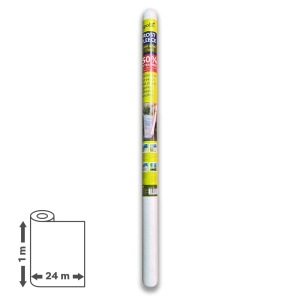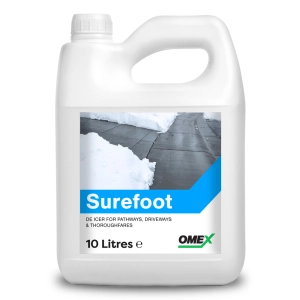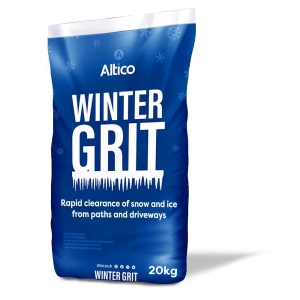Surefoot - The Science of Liquid Precision
Our Surefoot De Icer is a powerful liquid solution engineered for rapid and preventative ice management. But how does it work?
- Its non-corrosive formulation interferes with the freezing process – physically blocking the water molecules from locking into their ice formation.
- It penetrates small crevices and mixes with surface moisture instantly, creating a low-freezing-point brine solution much faster than solid salt granules.
- The speed at which the salt dissolves directly correlates with the speed at which FPD (Freezing Point Depression) takes effect. FPD is the principle that states that adding a solute (like the chloride salts in Surefoot) to water lowers the temperature at which the mixture will freeze. This makes it ideal for clearing existing ice quickly.
Surefoot is also effective as a preventative application before snow and ice is due. By forming the protective brine layer immediately, it ensures that ice never bonds strongly to the surface in the first place, saving time, and product. And as Surefoot is safe to apply to grass, you can create pathways through your lawn with it!
Find out how to use Surefoot effectively in our guide here.
Winter Grit - Traction and Duration
Winter Grit is made up of brown rock salt. Our winter grit blend offers a critical two-part solution to icy paths and drives, melting the ice, and creating friction:
- The rock salt component, like Surefoot, works via FPD - gradually melting the ice - and is typically effective down to about -6°C.
- The brown colour comes from natural clay and other impurities, which give the rock salt a rough, gritty texture. This grit provides immediate physical grip on a slippery surface, offering safety while the salt takes time to fully dissolve and melt the ice underneath. This happens because the countless irregular granules in the grit provide increased contact points, directly introducing friction, and a new surface for tires or footwear to grip.
Winter grit is perfect for large areas and high-risk spots, especially slopes where instant traction is needed for safe vehicle and foot traffic.
Frost Fleece - Mastering Thermal Insulation for Plants
Frost Fleece acts as a microclimate creator, shielding sensitive plants from freezing temperatures without stifling their growth.

Frost doesn't just damage plants by touching them; it damages them by drawing heat away from their cells. Here’s how it works:
- The fleece is a non-woven, fibrous material designed to trap a layer of still air directly around the plant and the soil.
- Air has a very low thermal conductivity—it is poor at transferring heat. By trapping still air, the fleece dramatically slows the rate at which heat radiates away from the plant into the cold night sky. This keeps the immediate environment of the plant warmer by several degrees, often enough to save it from frost damage.
- Unlike a sheet of plastic, the fleece remains porous. This allows for the slow exchange of air and water vapour, preventing excessive humidity buildup that could otherwise encourage fungal diseases.
Find out how to use frost fleece effectively in our guide here.
Timing
The best time to apply de-icing products is before the snow or ice event occurs—this is known as anti-icing or pre-salting.
Apply grit when freezing temperatures are forecasted, ideally in the late afternoon or early evening before the temperature drops.
When applied early, the salt dissolves in the moisture already on the pavement surface, creating a thin, protective layer of brine. This brine prevents ice from bonding to the surface.
Pre-salting uses significantly less product than trying to melt an established layer of ice. One kilogram of grit/salt spread preventatively can save up to five kilograms that would be needed to melt existing ice!

Surefoot de-icer is especially good for pre-salting because:
- It is already a liquid solution, so it forms the critical anti-icing brine layer immediately upon contact, giving it a head start over solid rock salt granules.
- It is easy to spray an even coat over a surface, ensuring complete coverage for black ice prevention.
The best time to apply horticultural fleece for frost protection is in the evening, just before sunset or after dark. Why evening?
- You want to trap the residual warmth from the day's sun underneath the fleece before the temperature begins to plummet overnight. Applying it too early in the day when the sun is still strong can cause plants to overheat.
- If the weather improves or the day is dry and sunny, you should generally remove the fleece in the morning once the temperature is safely above freezing.
Now you know how three of our key winter products work, you can feel assured in using them in your garden or outdoor spaces. Just don’t forget your gloves!






